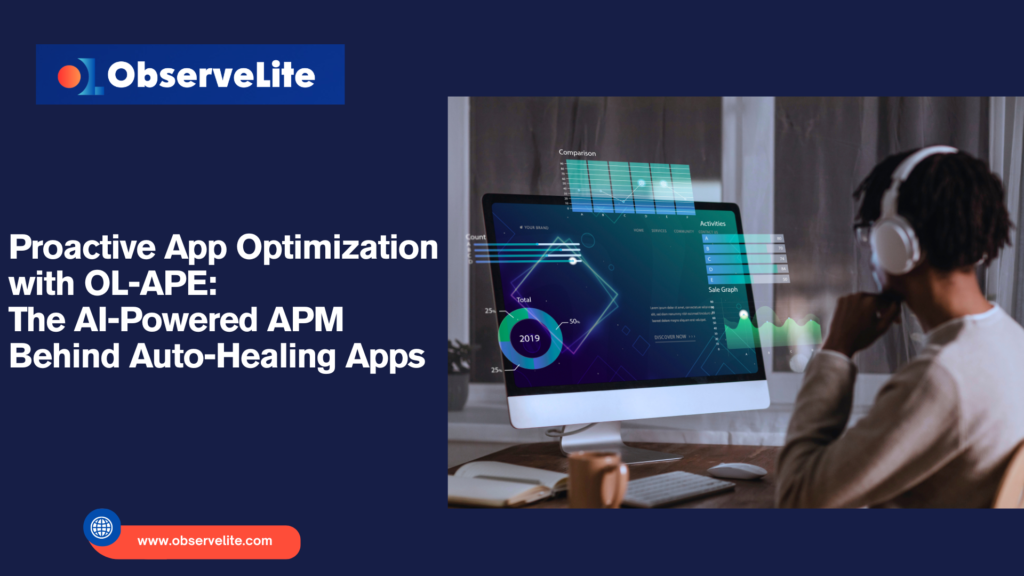Introduction
Application ecosystems today are distributed, dynamic, and deeply interdependent. Even minor disruptions—memory bloat, latency spikes, or degraded service calls—can ripple across the stack, compromising SLAs and eroding user trust.
Traditional tools aren’t enough. What modern teams need is an AI-powered APM—one that doesn’t just detect issues but prevents them before they surface.
ObserveLite’s OL-APE changes this dynamic.
OL-APE enables proactive, AI-powered APM by continuously learning from telemetry data and autonomously optimizing the system—before users are impacted.
The Problem: Signal Overload, Slow Insight
Modern systems generate mountains of logs, metrics, and traces. But most teams still depend on:
- Static thresholds
- Fragmented dashboards
- Manual root cause analysis
- Reactive remediation
This leads to alert fatigue, delayed detection, and longer MTTR (mean time to resolution).
What’s missing? A system that doesn’t just observe—but understands. One that predicts and preempts.
Introducing OL-APE: Your AI-Powered APM for the Modern Stack
OL-APE (ObserveLite’s AI-augmented APM engine) is deeply integrated into its Application Performance Engineering (APE) platform.
Trained on diverse production telemetry across tech stacks, OL-APE interprets behavioral patterns across:
- Apps
- Infrastructure
- Network
- Dependencies
It transforms observability from static data collection into AI-powered APM with contextual intelligence and actionability.
Core Capabilities of OL-APE
- ✅ Anomaly Detection: Behavior-based baselining for dynamic systems
- ✅ Cross-Stack Correlation: Connects the dots between layers
- ✅ Prescriptive Remediation: Recommends next actions via LLM-backed logic
- ✅ Autonomous Healing: Executes fixes via automation triggers
Optimization Workflow: From Detection to Resolution
1. Behavioral Anomaly Detection
OL-APE sets dynamic baselines for each monitored entity—e.g., microservices, JVMs, DBs. It doesn’t wait for fixed thresholds to break.
Example: A service’s average response time rises 35% post-deploy—not yet alarming, but statistically unusual. OL-APE detects this early, correlates it with memory allocation patterns and GC cycles.
2. Cross-Stack Root Cause Analysis (RCA)
OL-APE performs multivariate correlation, linking cause to effect across:
- Logs
- Infrastructure metrics
- Kubernetes events
- Network data
- External APIs
Example: A payment delay isn’t due to UI lag—but DB lock contention caused by a failed downstream failover. OL-APE finds it fast.
3. Prescriptive + Autonomous Remediation
Depending on your setup, OL-APE can:
- Recommend remediation steps (e.g., rollback config, increase thread pool)
- Execute them directly via Terraform, Kubernetes, or Ansible
All actions are version-controlled and fully auditable.
Auto-Healing Example: A pod repeatedly exceeds memory limits. OL-APE disables it, runs cleanup, and creates a detailed diagnostic report.
OL-APE Adds Intelligence to Observability
Traditional tools provide data visibility. OL-APE delivers insight with context:
- Time-series overlays with anomaly tags
- Natural-language RCA summaries
- Root-cause trees with confidence scores
- Before/after snapshots to validate remediation
This reduces cognitive load and time-to-action for DevOps and SRE teams.
Security-Aware Observability
OL-APE extends into security ops by correlating abnormal behaviors with potential threats:
- Brute-force login attempts
- Expired TLS certificates
- Resource spikes indicating container escape
These aren’t just alerts—they’re delivered with impact context and remediation plans.
Real-World Example: Healing Checkout Lag
A high-traffic retail app reported intermittent checkout lags. Traditional logs showed no smoking gun.
OL-APE surfaced:
- Post-deploy CPU usage deviation
- Query plan regression due to a missing index
- Pod memory pressure throttling workers
Result:
- Auto-scaled pods
- SQL fix pushed to dev backlog
- Zero user complaints
- No SRE time wasted on live debugging
Business & Technical Benefits
| Capability | Outcome |
| AI anomaly detection | Reduces false positives, surfaces critical issues fast |
| Cross-stack RCA | Speeds MTTR by tracing exact cause |
| Autonomous remediation | Frees up ops team, prevents outages |
| Plain-language diagnostics | Simplifies collaboration between teams |
| Security insight overlay | Tightens compliance and risk mitigation |
Who Benefits from OL-APE?
- SREs / Platform Engineers → Real-time RCA without dashboard-hopping
- Engineering Managers → Better insight, less alert fatigue
- CIOs / CTOs → Stronger uptime, performance SLAs, and efficiency
Why OL-APE vs Traditional APM?
Legacy APM tools monitor metrics in isolation.
OL-APE understands your system as a whole. It:
- Synthesizes all telemetry
- Applies clinical, contextual AI reasoning
- Converts that into action
It’s not just watching—it’s managing.
Next Steps
Ready to make your application stack auto-healing?
[Schedule a live demo of OL-APE]
Prefer a technical briefing?
Write to us at sales@observelite.com
Conclusion
Performance management is evolving from dashboards to decision-making engines.
With OL-APE, ObserveLite delivers AI-powered APM that’s proactive, predictive, and self-correcting—built for the speed and complexity of modern distributed systems.
It doesn’t just tell you when your app is slow.
It tells you why—and what to do about it—before your users even notice.


